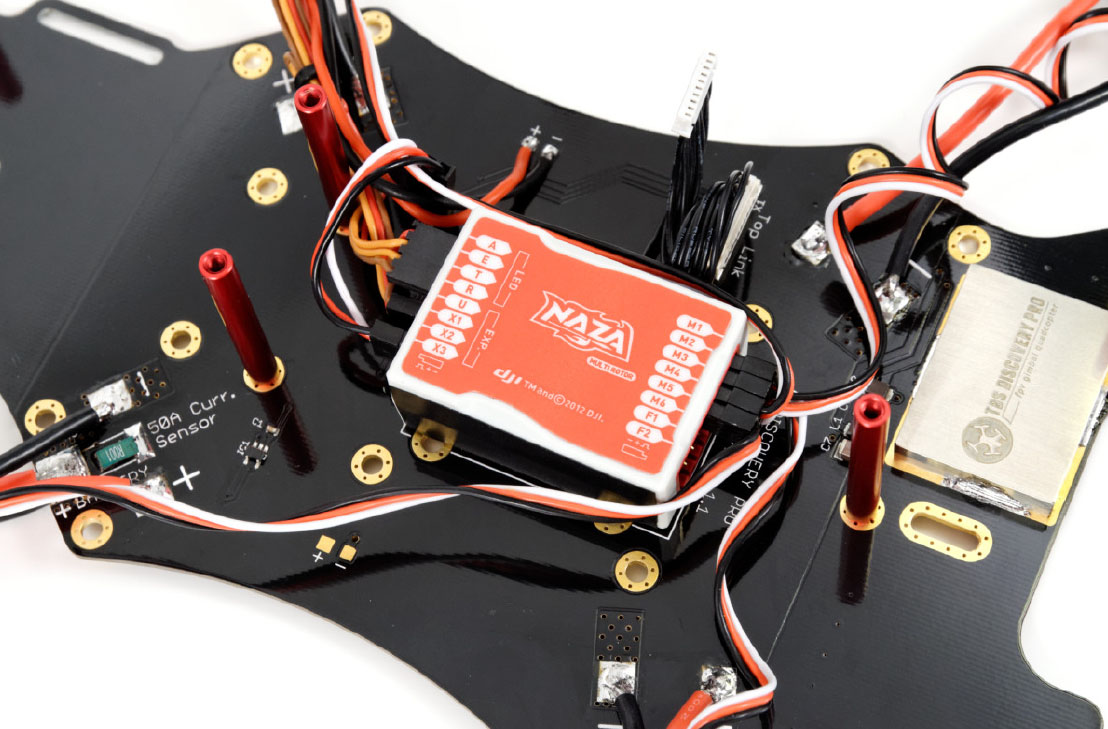Team BlackSheep Discovery Pro: Building A $3000 Quadcopter
Is it any surprise that PC enthusiasts also dabble in other technology-driven hobbies? Our editorial team recently purchased a high-end quadcopter to gauge the accessibility of first-person-view flight. Follow along as we build and critique the process.
Flight Control: DJI's Naza-M V2
So, the FrSky controller transmits a signal through ImmersionRC’s hardware, and that information is fed into DJI’s Naza-M V2 autopilot system—the computer, if you will, responsible for “taking the stress out of multi-rotors” by self-leveling and holding altitude. As with all of the other components in my build, there are alternatives to the Naza, many of which Clym discussed in his introductory piece. But DJI’s offering is considered to be the easiest for getting flying faster. I lack experience with MultiWii, KK2, ArduPilot or any of the others, so I’ll have to trust the community on this one. DJI sells a couple of other models, including the A2 and WooKong-M. But TBS is sticking with the Naza family for its Discovery Pro kits.
The box includes a main controller, a power management unit, an LED block with USB connectivity and a GPS. DJI spells out the purpose of each component in its documentation. But in brief, the PMU takes a 7-25V input and outputs 5V at up to 3A. The LED conveys system status through a series of red, yellow and green blink codes, additionally hosting the microUSB interface used to attach your PC. Naturally, the GPS fixes on satellites to triangulate your position. Should the radio lose contact (or you simply get into trouble and manually trigger it), a failsafe mode engages—the quad hovers for three seconds, and if you haven’t regained control, returns to the spot where you established satellite lock and started the motors. A multi-rotor flying under 20m ascends before making the journey automatically. A quad above 20m maintains its altitude and flies straight back before hovering for 15 seconds and then landing itself. Sound like useful functionality to have on a $3000+ aircraft? It is. Just don’t lean on it as a crutch. Twenty meters isn’t very high, and your quadcopter will plow into any tree, building or pole in its way if you aren’t clear of obstacles.
Of the configurable components in TBS’ Long Range kit, the Naza-M V2 is easiest to set up. DJI’s Assistant Software is superb. Although it includes pages of options, each setting is explained in sufficient detail for the neophyte to understand what it does and why it’s important. Some of the controller’s capabilities, like the Low-Voltage Alert and Intelligent Orientation Control, are eschewed by many enthusiasts. But the Enhanced Failsafe, Flight Limits and Command Sticks Calibration features are utilized universally.
Despite DJI’s excellent work, don’t be discouraged if some of the software’s fields just aren’t intuitive. For instance, input gains vary depending on frame, motors, propellers, and weight. Determining optimal settings would be daunting to a beginner. However, there’s a more experienced pilot out there with your exact hardware who already spent a weekend experimenting. Do a little sleuthing and you’re sure to find balanced gains to get you started. TBS suggests figures that cover the Discovery Pro and its own 900kV motors; my upgrade to 1000kV powerplants threw those numbers off, though.
Get Tom's Hardware's best news and in-depth reviews, straight to your inbox.
Current page: Flight Control: DJI's Naza-M V2
Prev Page Remote Control: FrSky And ImmersionRC Next Page The Gimbal
